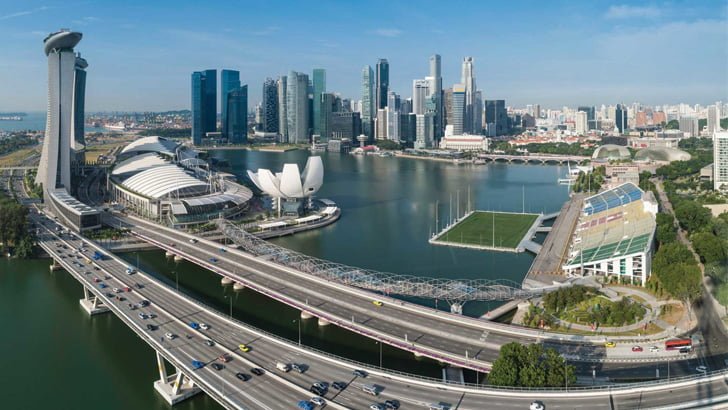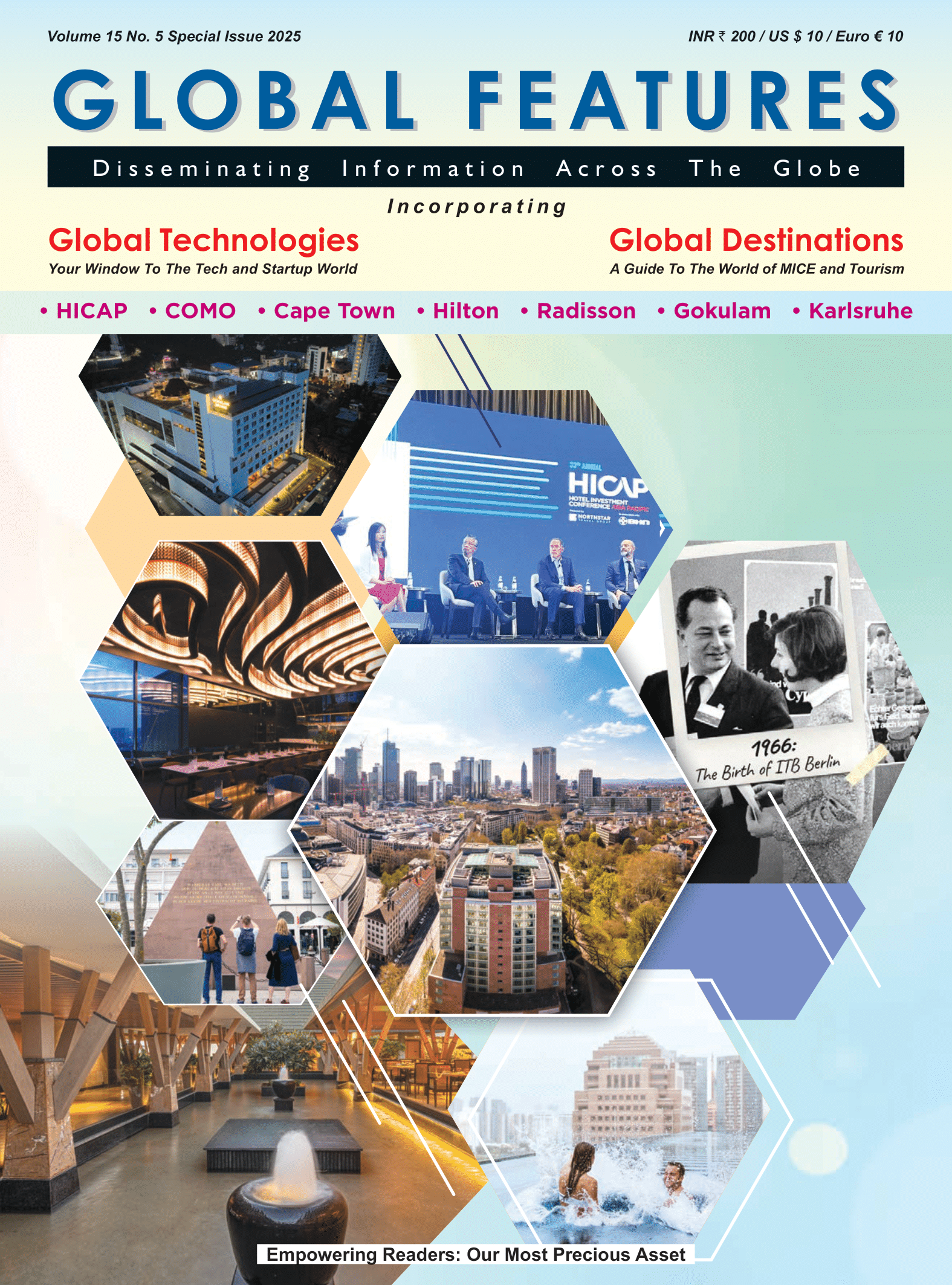IoT Analytics, a leading provider of market insights and competitive intelligence for the Internet of Things (IoT) and Industry 4.0, extensively researched the current developments in the Smart City development and found that there are seven things that set the leading cities apart from the rest.
This is one of the many findings of IoT Analytics’ latest 239-page publication titled “Smart City Market Report 2020-2025” summarizing the results of the surveys and interviews conducted between June 2019 and November 2020.
Commenting on the findings of the research Knud Lasse Lueth, CEO at IoT Analytics, says, ”As crazy as it would have sounded many years ago, Smart City technology is becoming part of our urban landscape. Cities like Prague, Manchester, or Melbourne use smart trash bins that notify (“talk to”) waste collection centers when they are full and ready for collection. Connected streetlights that automatically dim on and off according to actual lighting demands have become a reality in Miami, Edinburgh, and Jakarta. Citizens of Los Angeles, Hamburg, and Beijing can charge their electric vehicles while parked on the street.”
Fernando Alberto Brügge, Analyst at IoT Analytics, adds: “Despite these advances, global Smart City development in 2021 is at an infant level, with billions of urban populations not having access to many of these solutions. And cities are at significantly different stages of Smart City development.”
The cities that can be regarded as being at the forefront of the “Smart Cities of the future”, including Barcelona, Amsterdam, Singapore, New York, San Francisco, Dubai, Copenhagen, Seoul, Tokyo, and Adelaide (just to name some of the front-runners).
1. Holistic Smart City development [rather than application-specific]
Successful Smart Cities tend to exhibit a holistic approach towards Smart City development, prioritizing the integration of (new and legacy) city applications and infrastructure under the same system to gain a complete view of the city. Holistic “Smart Cities of the future” initiatives focus on developing a common IT infrastructure and platforms that can be further leveraged by multiple Smart City applications. This contrasts with solely focusing on a particular application area (e.g., Mobility, Energy, Governance), where solutions tend to work in silos limiting the potential reusability of the deployed IT infrastructure for additional use cases. Typically, these holistic projects involve using a centralized management software (i.e., Smart City platform or operations center) for a complete view of the various Smart City applications.
Example: In 2010, the city of Rio de Janeiro developed an Operations Center to improve the city’s resilience. The center monitors and controls the city’s daily operations, integrates several public entities involved in Rio’s routine and manages crisis and emergencies. Since its creation, Rio Operations Center has provided numerous benefits to city officials and citizens. The center helped the city to improve management efficiency in challenging areas such as transportation. Emergency response times were reduced by 30% due to the center’s ability to automatically identify traffic incidents and rapidly send field teams to the incident’s location. Rio Operations Center also played a key role in fighting the spread of dengue fever. Based on geographical analyses of cases, the city was able to identify the specific areas with the highest infection rates. This information was used to implement preventive measures (link).
2. Citizens-come-first mindset
Successful Smart Cities of the future exhibit a citizen-oriented approach by developing infrastructures that connect and enable citizens to become co-creators of their future city. They set up IoT Living Labs across the city where citizens, students, researchers, and businesses can create and test Smart City ideas and applications under real conditions. These urban labs typically consist of a specific area within the city that is either equipped with IoT capabilities (e.g., Amsterdam IoT Lab) (link) or delimited for deploying and testing Smart City solutions at a small scale without any regulatory restriction (e.g., Copenhagen Street Lab) (link).
Example: In Copenhagen, developers can submit a request for testing their Smart City solution to the city’s Street Lab. Once accepted, Copenhagen Street Lab offers full assistance to install and connect the solution to the existing infrastructure. Additionally, Copenhagen Street Lab provides developers with the necessary permits and access to feedback from citizens using the solution and industry professionals.
Additionally, successful Smart Cities develop participatory platforms that empower citizens to submit and vote on local policy proposals (e.g., Barcelona Decidim platform, Seoul mVoting platform). These platforms also enable cities to listen to their citizens’ opinions without conducting traditional surveys that are costly, time, and human resources consuming.
Example: As of March 2017, 4,404 proposals have been voted on via the Seoul mVoting platform (88.3% of which were proposed by the citizens, while the remaining 11.7% by the officials), with 181 of them becoming Seoul’s Policy (link). Through mVoting, citizens have been able to participate in various city decisions, ranging from ordinary city life issues such as whether certain city parks should be designated non-smoking areas to major budgetary decisions such as where to destine a certain portion of the municipality’s annual budget.

3. Alignment with government initiatives
Successful Smart Cities tend to tie their initiatives into larger municipality or government initiatives in a Smart City program or plan. Compared to standalone Smart City programs, governments’ Smart City initiatives typically are accompanied by policies and legislations that facilitate their development and implementation.
Example: In 2014, Smart City initiatives in Singapore were included within the government’s Smart Nation program to create a digital economy, society, and government. To realize its nationwide Smart City project, Singapore’s government has adopted several measures harnessing innovation and research. These measures include, among many others, investments in research and development through agencies such as the National Research Foundation, the creation of test-bedding and trials (e.g., Juring Lake District), the co-funding of start-up accelerators, and regulatory reforms (e.g., FinTech Regulatory Sandbox).
4. Long-term vision
Programs for Smart Cities of the future exhibit long-term character. Implementing specific Smart City solutions should not solely focus on addressing a particular goal (e.g., improving urban mobility) but should be geared towards realizing an overarching Smart City vision.
Example: Copenhagen’s Smart City strategy has 5 focus areas (Health, Mobility, Energy, Smart Citizens, and Smart Learning) where numerous Smart City projects and solutions are being developed with the overarching aim of improving citizens’ quality of life and making Copenhagen the world’s first carbon-neutral capital by 2025.
5. Sustainability as top priority
Within their Smart City program, successful Smart Cities prioritize the development of specific Smart City solutions that help them the most in improving environmental sustainability. IoT Analytics observes that all the top fastest-growing Smart City use cases have a direct impact in reducing cities’ carbon emission levels and improving the quality of life of their citizens. The list is led by EV Charging Management, followed by Shared Mobility, Air Quality/Pollution Monitoring, Connected Streetlights, Traffic Monitoring and Management.
Examples: Cities such as Barcelona (link) and Amsterdam (link) have invested in extending and managing the charging infrastructure for their e-bus fleet for their Smart Cities of the future. Similarly, Tokyo has invested in developing a low-carbon sharing mobility scheme to reduce its annual carbon emissions (link).
6. Public-Private-Partnership programs
Cities typically rely either on public or private funding for realizing their Smart City projects. Yet these sources of capital tend to be difficult to secure given the presence of government budgetary constraints, along with the difficulty of demonstrating acceptable ROI for Smart City projects. To overcome funding-related limitations, successful Smart Cities tend to encourage and facilitate collaboration (i.e., Public-Private-Partnerships (PPPs)) between the public and private sectors in the development and implementation of Smart City projects. Compared to solely private or public funding, PPPs provide numerous benefits for Smart City projects. They enable a more balanced sharing of risk, costs, and benefits between the public and private sectors, reducing city budget pressure. PPPs further minimize projects’ dependence on municipal budgets or political leadership changes, thus providing long-term investment opportunities to support the planning and implementation of more extensive Smart City projects, among several other benefits.
Example: The city of Hangzhou in China provides an interesting example of a successful PPP, where an extensive collaboration between the local government, Alibaba, and 13 other companies has pushed forward Smart City development in the area (link).
7. Open, city-wide databases and platforms
Developing open, city-wide databases and platforms whereby various city-related datasets and platforms are freely available to the public constitutes another top priority in the agenda of Smart Cities of the future. Making city datasets freely available has been demonstrated to bring about many benefits for cities, including improving city services and government operations through citizen participation and the emergence of new data-driven business models. Additionally, open data initiatives are a crucial part of Smart City development since they stimulate innovation by enabling citizens and businesses to leverage key data for creating Smart City solutions.
Examples: Seoul has created Open Data Plaza, an open platform that enables third-party developers and researchers to access various urban datasets (link). Similarly, Copenhagen has created Open Data DK, an online portal where key data about the city can be freely accessed (link).
Smart City Market Report 2020-2025 is priced at $5,000.00 (single) – $8,000.00 (enterprise)









Leave a Reply